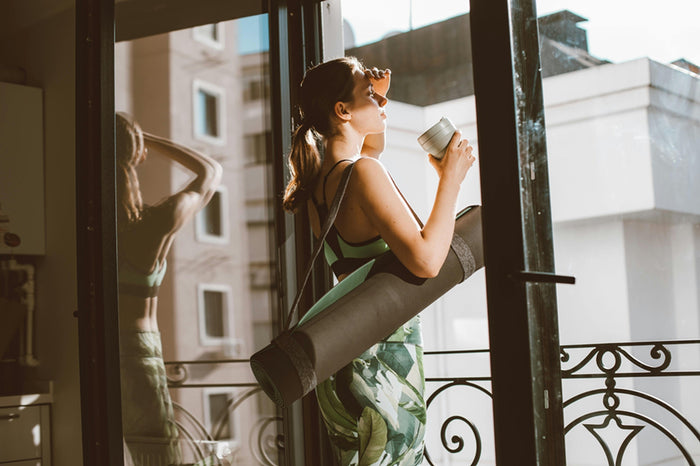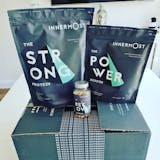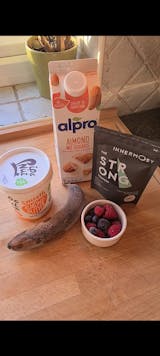You may be thinking, “oh, I only jog once or twice a week, I don’t need a specialist running shoe” or “my normal day-to-day trainers are as good as anything.” Unfortunately, that isn’t the case.
With the past year of lockdowns, gym-closures and pretty drastic lifestyle changes, more and more of us are turning to exercise to get ourselves out the house, bring some routine back to our lives and get ourselves into shape. As our way of life has changed and more conventional workout routes have become difficult to access – aka, gyms have all shut down and our takeaways have stayed open – many people have found staying active and keeping ourselves in shape increasingly difficult.
As a result – many of us have taken up running, which is great! However, a lot of people have started this exercise regime without the proper equipment, and this is something we need to combat. Many of us are put off by the sheer choice and sometimes, price, of specialist running shoes – but selecting the perfect running shoe for you isn’t as daunting as you may initially think. Finding a good pair of running shoes that suits your foot is key to ensure proper support and optimum performance.
But, where do we start? What are the best trainers for running?
Tip One - Do your market research
Please, please, please, don’t just go online and pick a pretty shoe that is on offer. There are a few things you need to think about first.
When selecting the best trainers for running, there are some key points you need to consider.
- Motion Control
- Adequate Cushioning
- Stability
- Lightweight Styles
- Trail Type
Tip Two - Consider the shape of your foot
Determining the shape of your foot is a great way to work out what kind of shoe you need. The shape of your foot actually has a huge influence on your running style, and for this reason, is a great way to make sure you’re properly equipped for a great run.
When talking about ‘foot type’, generally, we are referring to your in-step, which is the part of your foot between your ball and the ankle.
A great way to find out the shape of your foot is to look at your current shoes and see where your running shoes are most worn. There are three types of foot:
Flat FootAs the name suggests, this means that when your foot is on the ground, there is no gap between your in-step and the floor.
If you have this kind of foot, the best running shoes for you will have lots of cushioning to take the impact of the ground.
Neutral FootA neutral foot means that you place equal weight across your foot, and your arches are a normal pronator.
If you have a neutral foot, the best running shoes for you will have adequate cushioning, a great range of motion and be light weight.
High-ArchedIf you have a high-arched foot, it’s important to get properly fitted running shoes to mitigate the risk of strain or injury.
The best running shoes for someone with a high arch will have lots of cushioning and support. This is needed to protect your feet and prevent out-ward rolling of the foot.
Tip Three - Ask for specialist advice
It’s important to remember that when asking friends, family and even shop assistants for advice – everyone’s feet are different. Whilst one suggestion may be perfect for your friend, this exact shoe could be your absolute worst nightmare.
Ask for recommendations, don’t pick the first shoe you come across, and really make sure to weigh up your options before committing to a pair – as a good pair of running shoes could cost you a fair price.
Now, you may be thinking – “This all sounds a bit complicated for my liking…” and yes, we agree, finding the perfect running shoe can be a bit of a minefield. But, as the old saying goes – nothing worth having comes easy. So, if you’re still on the fence, outlining the benefits might make this a bit easier for you…
- Reduces your risk of injury
- Improved performance
- Cost-effective
Tip Four - Think about your workout
One key mistake people make is the belief that one shoe will be fitting for all of your workouts. This isn’t the case, and a great way to think about it is to compare a shoe you would choose for weightlifting, vs one for running.
When weightlifting, the main feature you are looking for is a flat sole, with grip and some weight. Many opt for a classic Converse shoe for this reason – as they are incredibly flat, providing a great surface to hold your centre of gravity.
On the flip side, with running shoes – you want to go for the complete opposite. Lightweight, cushioned and not tight fitting is the way to go here.
Tip Five - Go up a shoe size
Whilst this goes against pretty much everything you know about buying yourself a pair of shoes, the best running trainers give you a bit of leeway. When trying on the trainers, ensure the tip of your toe isn’t touching the top of the shoe – a great way to do this is by going up a size.
This is because when running, your feet move around and you need to ensure there is enough room in the running trainer for this to happen.
Summary
If you’re into your running – or any exercise for that matter, we think it’s a really good idea to make sure you’re properly equipped for the job. Investing in yourself is investing in your performance – so it’s a no brainer to us!
Our Suggestions
As a starting point, you could even take a quiz to discover the best running shoe for you. Another great idea for beginners is to get a Gait Analysis.
Check out brands such as ASICS and Brooks to grab some inspiration and see what’s out there – but make sure you don’t buy anything online. Go in store, get size checked and make your decision from there. We’re sure you’ll see a positive change in your running performance. Happy running!
























